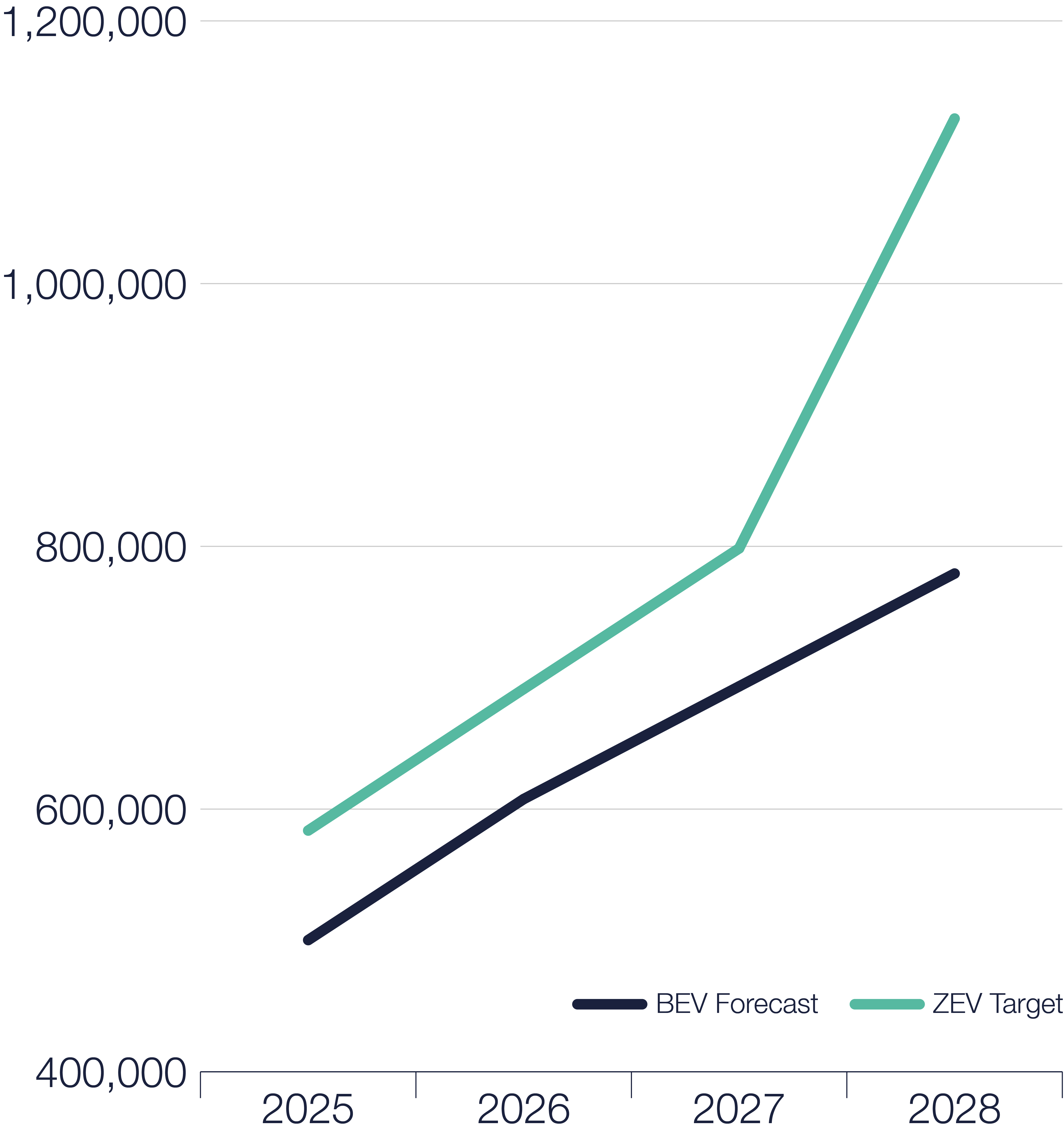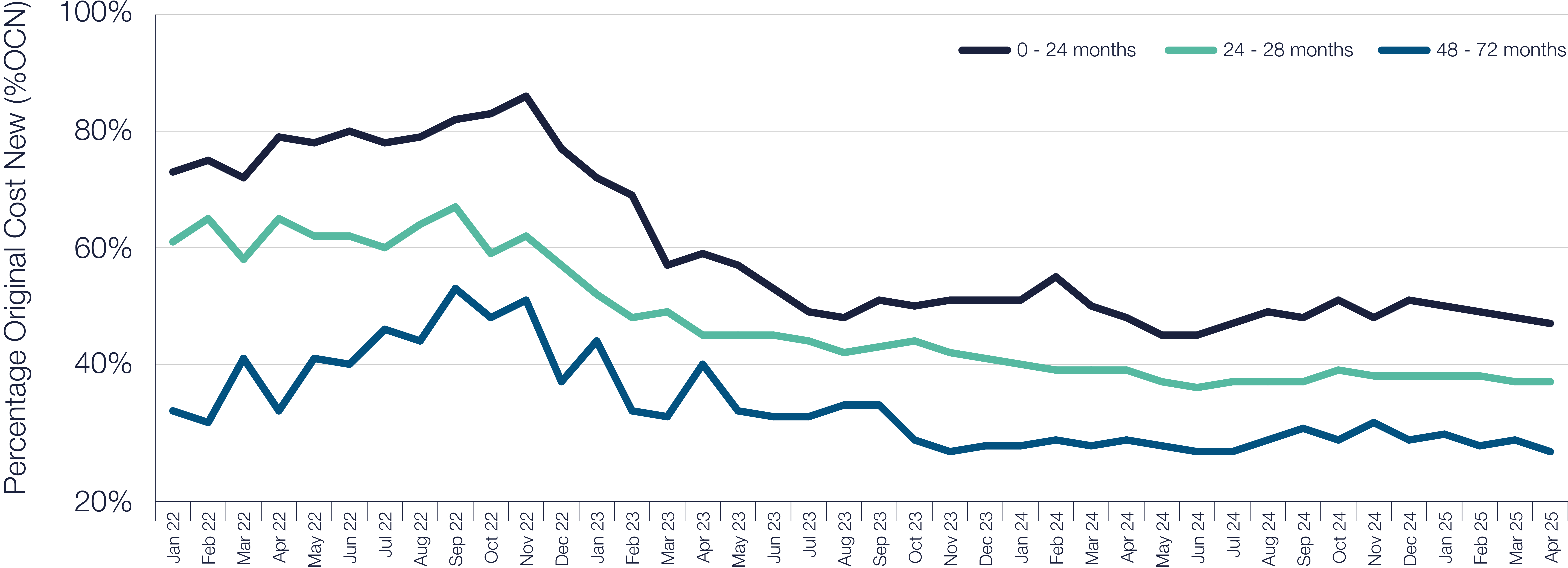IQ
Insight
Quarterly
Q1 | 2025
The electric vehicle market: Market complexity threatens to stall progress
6 min read
Our new electric market overview delves deeper into the details surrounding Europe’s transition to zero-emission transport. Extrapolating insights from our new and used car forecasts, combined with market intelligence, we aim to shed light on the shifting dynamics of this complicated transition. While adoption is accelerating, regulatory dynamics and inconsistent consumer demand threaten to slow adoption and dampen momentum.
Europe stays on the net-zero course
Despite regulatory shifts, global trade tensions, and evolving domestic policies across Europe, the direction of travel remains firmly towards zero-emission transport. However, the journey is fraught with complexities, which vary widely by country.
Across the continent, EV sales surged by 67% in Q1 2025, with especially strong performance in Germany, Spain, Italy, and the UK. Compared with global sales, which grew by 29% in the same period, this positions Europe as a clear frontrunner in driving zero-emission mobility. On the flip side, France bucked the trend with an 18% decline in electric sales.
While this positions Europe as a clear opportunity for new market entrants, complications surrounding geopolitical tensions, particularly the renewed US tariffs under the Trump administration, are causing global manufacturers to reassess their strategies. In the long term, many established brands will shift their focus back to their domestic markets to limit their exposure to this disruption, while the pace of growth for the Chinese market entrants may slow.
UK’s electric market falls short of targets
EV registrations reached record volumes across the UK in March, with 69,313 new EVs sold. This surpassed the previous record set in September 2024. This was driven predominantly by manufacturer discounts, combined with a rush from consumers to avoid new tax increases taking effect in April. In addition, we also saw a raft of new product launches and dealerships setting up from the new market entrants.
However, this recent boost in EV demand does not bring the UK up to meet the targets outlined in the Zero Emission Vehicle (ZEV) mandate. Our forecasts currently predict that the UK will end the year with 24% new EV registrations, 4% shy of the total target.
EV Registrations vs Target

Source: Cox Automotive
Further, the industry has expressed concerns that this registration boost may not be indicative of long-term demand, which brings the sustainability of EV adoption without deeper policy and fiscal support into question. While the UK government has adjusted the ZEV mandate to reduce the financial penalties on manufacturers who don’t meet the targets, these are minor in the greater context of the current pressures on the industry. With the industry’s exports under threat due to tariffs, along with complications in the global supply chain and inconsistent consumer demand for EVs, much more needs to be done.
The upcoming 75 plate change in September presents the next tangible opportunity to boost adoption, but progress may stall without rapid reform and government backing. As an industry, we are committed to building an electric future, but it must be done in an economically sustainable manner. Our research has found that consumer incentives, improvements in the nation’s charging infrastructure, and policies are needed to make a greater impact on the unsustainable costs of this transition.
Older electric models outstrip newer vehicles
A surge in EV pre-registrations is impacting remarketing performance. The heavy incentives on offer for new EVs are dampening demand for the nearly-new models available in the used market, which are now taking longer to sell than petrol or older EVs. Looking at residual values, EVs aged up to 24 months old sold through Manheim Auction Services held an average trade value of 83% in October 2022 compared to their original cost new. However, the same age profile sold today has dropped to 47%.
Meanwhile, EVs between 3-5 years old are performing strongly, driven predominantly by post-Covid supply constraints. At auction, EVs between 48-72 months have seen a more modest drop of 15%, while they remain one of the fastest-selling segments through retail channels. Understanding and utilising this real-time data is increasingly critical to identify margin opportunities and managing stock risk effectively.
EVs Trade Sale Value as a Percentage of Original Cost New (%OCN)

Source: Manheim Auction Services






